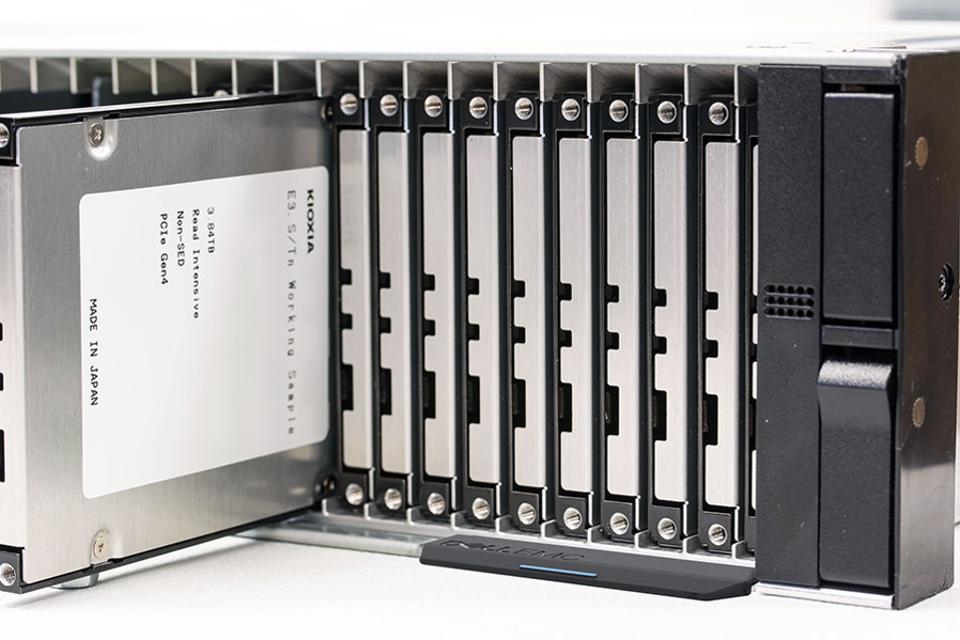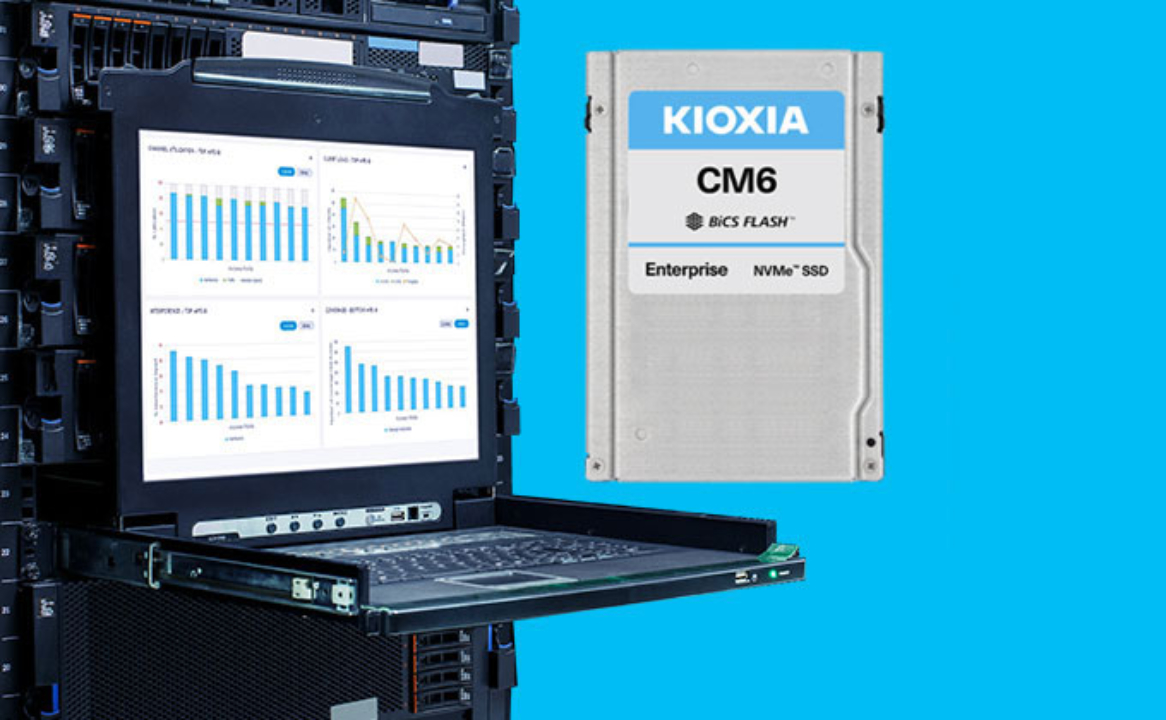Forward-looking: Kioxia has begun shipping engineering samples of its next-gen storage based on the enterprise and datacenter SSD form factor (EDSFF). Formerly called Toshiba Memory, the flash storage manufacturer demoed the new short ruler format SSD, E3.Short (E3.S), based on its current CM6 series of 2.5-inch NVMe PCIe 4.0 SSDs and touted a noticeable performance increase, alongside PCIe 5.0 support and improved thermals to keep up with the blazing speed and higher power budget.

Kioxia is targeting the enterprise space with its next-gen high-performance NVMe SSDs. After all, the new drives employ EDSFF, and Kioxia claims it's able to offer numerous benefits over legacy form factors like 2.5-inch SSDs.
The company recently demoed the E3.S (3-inch) SSD, a storage format standardized by the SNIA, while the drives themselves are currently being developed for All-Flash Array (AFA) servers used in enterprise deployments and cloud data centers.
Kioxia notes that the E3.S form factor allows for a variety of size, power, and capacity configurations, while interfacing is made convenient through a common PCIe connector. The drives also have a higher power budget of up to 40W and carry support for up to x8 PCIe lanes.

Although the company did not publish any read/write speeds or IOPS, the drives reportedly managed a 35 percent performance increase over Kioxia's CM6 Series, using the latter's controller and BiCS FLASH 3D TLC flash memory, while running on 4 PCIe lanes and drawing 28W (an additional 40%) of power. For reference, the CM6 Enterprise series offers up to 6.2GB/s throughput and 1.4 million IOPS.
The drive also touts support for "PCIe 5.0 and beyond through improved signal integrity" alongside better cooling and thermal characteristics. Kioxia's upcoming SSD is yet to be named and other factors like storage capacities, price, and availability are also unknown at this point.
https://www.techspot.com/news/85829-kioxia-demos-new-e3s-form-factor-pci-50.html